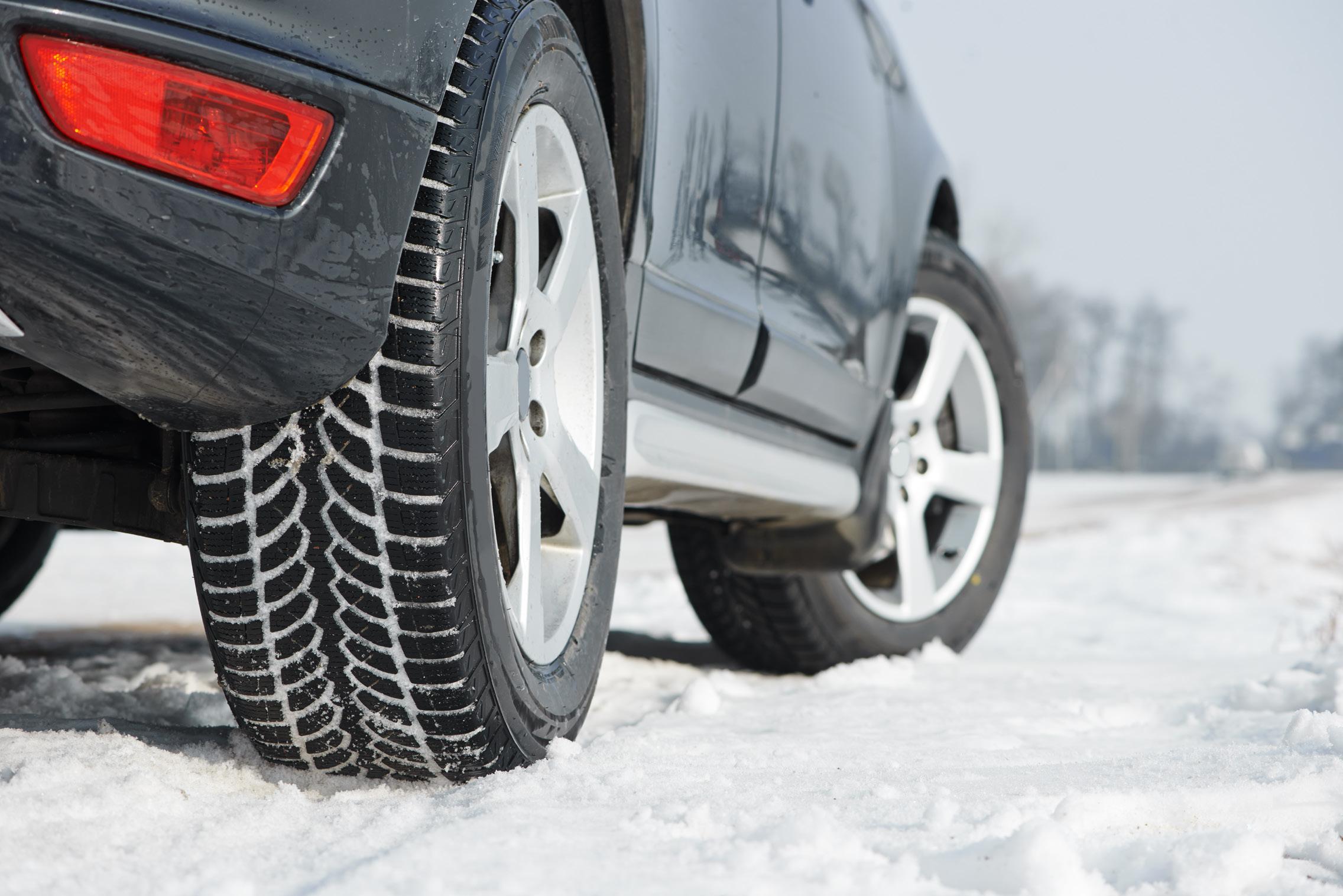
9 minute read
Employee Safety
from Interchange – January 2023
by WYDOT
Substance abuse
By Jerry Fritz, D5 Safety Representative and Lt. Lee Pence, Wyoming Highway Patrol
In 2022, Lt. Lee Pence, with the Wyoming Highway Patrol, drove past a horrific accident in Superior, Wisconsin. The tragic accident left one man dead and led to the death of a child.
“I traveled by this crash the morning it happened. It was so ugly, that I looked it up when I got back to Wyoming and found the subject was a police sergeant. My first thought was that it likely wasn’t his first time driving drunk, it rarely is,” said Lt. Pence. “Second, someone around him likely saw red flags and did nothing. Although he was off duty, I suspect this guy likely came to work from time to time with alcohol on his breath. He was coherent enough (likely a seasoned drunk) after the crash to discard his empties.”
There have been several incidents during the past year that involved WYDOT personnel showing up for work while intoxicated. These are the ones we know about, how many others have shown up for work impaired? It is the policy for the state of Wyoming to “maintain a workplace free of substance abuse.” A few signs that someone may be impaired are slurred speech, impaired coordination and motor skills, confusion, memory problems, concentration problems, general personality changes and the smell of alcohol. If you suspect someone of being impaired, notify your supervisor as soon as possible.
The U.S. Department of Labor found that employees’ use of drugs or alcohol contributed to 65 percent of on-the-job accidents. Addiction in the workplace also goes beyond just the substance user. Disruptions and accidents in the workplace due to substance abuse have far-reaching implications, endangering the impaired individual, co-workers, employers and those who have a relationship with a company, whether as consumers, clients, or partners. Chapter 1: General Provisions (State of Wyoming Personnel Rules)
Section 8. Substance Abuse.
(a) Policy. It is the policy of the State of Wyoming to maintain a workplace free of substance abuse as set forth by Executive order 1990-2 (b) All employees shall be given a copy of the executive order 1990-2 Substance Abuse Policy. (c) Employees shall be informed that they must abide by the terms of the policy as a condition of employment and of the consequences of any violation of such policy.
“It doesn’t matter the profession at WYDOT, we can all think of someone who has pushed the limits. I think we need a strong message sent across WYDOT that this isn’t acceptable. We need to be looking after one another and holding each other accountable,” said Pence. “Supervisors need to be holding the line and enforcing policy on this subject. We need to have zero tolerance. I’d rather be short with the right people than full with the wrong people. We owe it to the public and our employees to keep them safe.”
If you are struggling with substance abuse, help is available through the Employee Assistance Program, online at http://myassistanceprogram.com/fei/ or by calling (800) 638-3327.

This winter Wyoming will experience severe cold temperatures, strong winds and the chance for frostbite, hypothermia and cold stress to set in very quickly. Planning is the first step. If you are in a position that requires you to be in the elements, dress warm and minimize the amount of time you are exposed to the wind and frigid air. Wear warm clothes and fabric that wicks away moisture. Have a go-bag that includes extra winter weather clothes for your travels, or if you are operating a plow. Ensure your vehicle is equipped with tools and equipment you may need during an unexpected breakdown. At home, make sure your pets are well protected while you are away.
Cold stress
Cold stress occurs by driving down the skin temperature and eventually the internal body temperature. When the body is unable to warm itself, serious cold-related illnesses and injuries may occur and permanent tissue damage and death may result.
Four factors that contribute to cold stress are: cold temperatures, high or cold wind, dampness and cold water. A cold environment forces the body to work harder to maintain its core temperature. Cold air, water and snow all draw heat from the body. So, while it is obvious that below freezing conditions, combined with inadequate clothing, could bring about cold stress, it is important to understand that it can also be brought about by temperatures in the 50’s coupled with rain and/or wind.
Frostbite
Frostbite is caused by the freezing of the skin and tissues. Frostbite can cause permanent damage to the body and in severe cases can lead to amputation. Frostbite typically affects the extremities, particularly the face, ears, fingers and toes. Reddened skin develops with gray and white patches in the fingers, toes, nose, or ear lobes; tingling, aching, a loss of feeling, firm/hard skin and blisters may occur in the affected areas.
Frostbite first aid
• Protect the frostbitten area, e.g., by wrapping loosely in a dry cloth and protect the area from contact until medical help arrives. • DO NOT rub the affected area, because rubbing causes damage to the skin and tissue. • DO NOT apply snow or water. Do not break blisters. • DO NOT try to actively re-warm the frostbitten area
Hypothermia
Hypothermia occurs when the normal body temperature (98.6°F) drops to less than 95°F. Hypothermia is most likely at very cold temperatures, but it can occur even at cool temperatures (above 40°F) if a person becomes chilled from rain, sweat, or immersion in cold water.
Mild hypothermia symptoms appear when the victim is alert but shivering. Moderate to severe hypothermia begins when shivering stops, confusion and slurred speech begin, heart rate and
Hypothermia first aid
• Call 911 immediately in an emergency. • To prevent further heat loss: Move the worker to a warm place. Change to dry clothes. Cover the body (including the head and neck) with blankets, and with something to block the cold (e.g., tarp, garbage bag). Do not cover the face. • If medical help is more than 30 minutes away: Give warm, sweetened drinks if alert (no alcohol). Apply heat packs to armpits, sides of chest, neck and groin.
Preventing cold stress
Planning for work in cold weather is the most important defense in preventing cold stress. Wearing appropriate clothing and being aware of how your body is reacting to the cold are important to preventing cold stress. Avoiding alcohol, certain medications and smoking can also help to minimize the risk.
Protective clothing
Wearing the right clothing is the most important way to avoid cold stress. The type of fabric also makes a difference. Cotton loses its insulation value when it becomes wet. Wool, on the other hand, retains its insulated qualities even when wet.
Work schedules – limit the exposure time
• Developing JSA’s that identify potential hazards and the safety measures that will be used to protect workers • Limiting the amount of time spent outdoors on extremely cold days • Providing warm areas for use during break periods • Try to work in pairs to keep an eye on each other and watch for signs of cold stress. Victims of hypothermia may not recognize symptoms. • Encourage employees to drink plenty of liquids, avoiding caffeine and alcohol. It is easy to become dehydrated in cold weather. • Monitoring the weather conditions during a winter storm, having a reliable means of communicating with workers and being able to stop work or evacuate when necessary • Having a means of communicating with workers, especially in remote areas. • Avoiding exposure to extremely cold temperatures when possible.
First row, from left: WHP Lt. Col. Joshua Walther, new Trooper Clancy Gines, new Trooper Chad Dollick, and retired Lt. Col. Shannon Ratliff. Second row from left: Sgt. Harley Kalb, Lt. Kyle McKay, Capt. David Wagener and Maj. Karl Germain. The group stands at the Wyoming Supreme Court to celebrate the commissioning of Gines and Dollick as the state’s newest Troopers.
Wyoming Supreme Court Chief Justice Kate Fox leads Wyoming Highway Patrol recruits Chad Dollick, left, and Clancy Gines, right, through their oath of office during the WHP Academy Class 103 Commissioning Ceremony in late-December.

WHP commissions Class 103
Likely one of the smallest graduating classes in WHP history
By Jordan Achs
Two Highway Patrol recruits received an early Christmas present this year as they graduated and received their badges on December 23, 2022.
Chad Dollick, who will be based in Gillette, and Clancy Gines, who will be based in Rock Springs, were the final recruits to graduate the 103rd Highway Patrol Academy Class.
To get to graduation, Dollick and Gines underwent a 20 week training academy together. Dollick received the Firearms Proficiency Award, the Academic Award and the Colonel’s Leadership Award during his time at the academy. Gines received the Overall Fitness Award.
The ceremony took place at the Wyoming Supreme Court and included the presentation of colors by the WHP Honor Guard, an invocation from WHP Chaplain John Byerly, remarks from Interim Administrator Lt. Colonel Shannon Ratliff and Academy Coordinator Sergeant Harley Kalb, and remarks from Chief Justice Kate Fox and Justice Lynne Boomgaarden of the Wyoming Supreme Court.
“As new Wyoming Highway Patrol troopers,” Boomgaarden said during her speech, “you will protect our communities, hold individuals accountable and ensure justice. Thank you for stepping up to fill that critical role in our justice system. … By receiving your badge, each of you in Wyoming Highway Patrol Class 103 has shown you’re a person of integrity and extraordinary skill. We also are confident that, as you become important members of the communities you’ve been assigned to serve, you’ll be

genuine, supportive, fair and will respectfully listen.”
When it came time for the oath, every trooper in the room raised their hand and spoke with the two recruits, honoring that the oath is an everlasting and special commitment.
“We did this for a couple reasons: It’s important for all of us to revisit our commitment, our responsibility and our accountability to those we serve, and it’s equally important that we all demonstrate our solidarity and support for you,” said Ratliff.
The pinning of the badges was done by the recruits’ family members, honoring their role in the journey to becoming a WHP Trooper.
“Each of you have sacrificed much over the past 20 weeks, and so have your families,” Ratliff said. “A huge thank you to your families, who have had to make everything happen in your absence, and who will continue to love and support you throughout your careers.”
The two newest Troopers will continue their training in the field with other troopers in their jurisdictions.
“Dollick, Gines, thank you for stepping up and being the Trooper that is needed,” Kalb said during the ceremony. “You have worked incredibly hard, and it has all paid off. Class 103, you are dismissed.”
Trooper Chad Dollick and his wonderful family left California in pursuit of a less stressful and more beautiful place to live. They initially landed in South Dakota but eventually migrated to Wyoming. Dollick joined the Wyoming Highway Patrol with a decorated background in law enforcement. He and his family are excited to be in the Cowboy State to explore and protect. He will be based in Gillette.
Dollick
Clancy Gines
Trooper Clancy Gines is a Wyoming native. Born and raised in Farson, Wyoming, Gines is eager to give back to the community that raised him. He studied criminal justice at Chadron State where he played football. He was awarded a bachelor’s degree that will benefit him and the state well in his law enforcement career. Gines will be based in Rock Springs.
Gines




